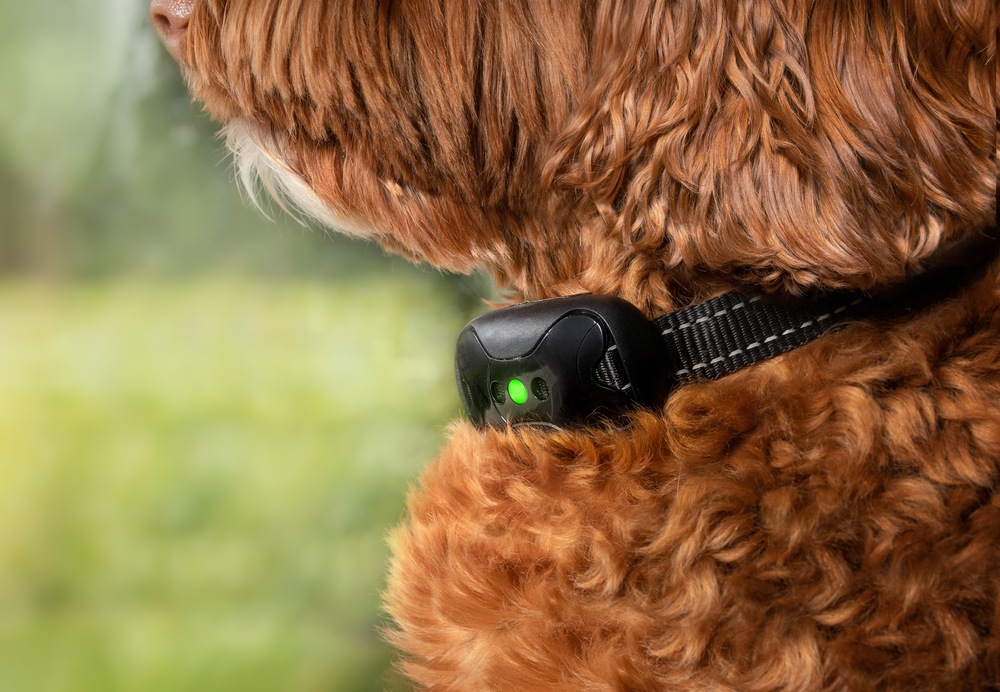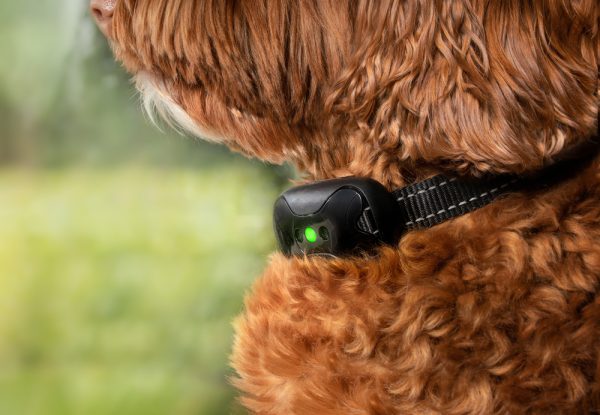Click to Skip Ahead
Dog training can be hard—really hard. Some dogs will pick up commands on the first go, others take a lot longer, and then there are those whose training seems to go out the window as soon as adolescence hits. As the owner of a challenging dog myself, I can completely relate to the angst and frustration of feeling like nothing is working and searching for options and tools to get your dog to listen to your commands. I have even been tempted into using a shock collar, convinced that I had tried everything else and that this was the only way forward.
So, do shock collars work on dogs? Occasionally. Do they achieve the desired results? Sometimes. Are they the most patient and positive way to train your dog? Definitely not.
Let’s take a look at how shock collars work, including the type of message they send your dog and why there are usually better ways to achieve the results you’re looking for.
Types of Dog Training
When it comes to dog training, there are three possible ways to respond to a behavior:
- Reinforce: Rewards or encourages a desired behavior
- Punish: Unpleasant consequence to unwanted behavior
- Neutral: An absence of reaction, neither good nor bad
In the psychological method known as operant conditioning, described in 1938 by B.F. Skinner, learning is based on responses that either encourage or discourage a behavior.1 When we’re talking about training, “positive” means to give something, and “negative” means taking something away. When we reinforce a behavior, we aim to encourage and strengthen the link between a command and that behavior. With punishment, we are trying to stop or discourage an action. This gives us four types of training.
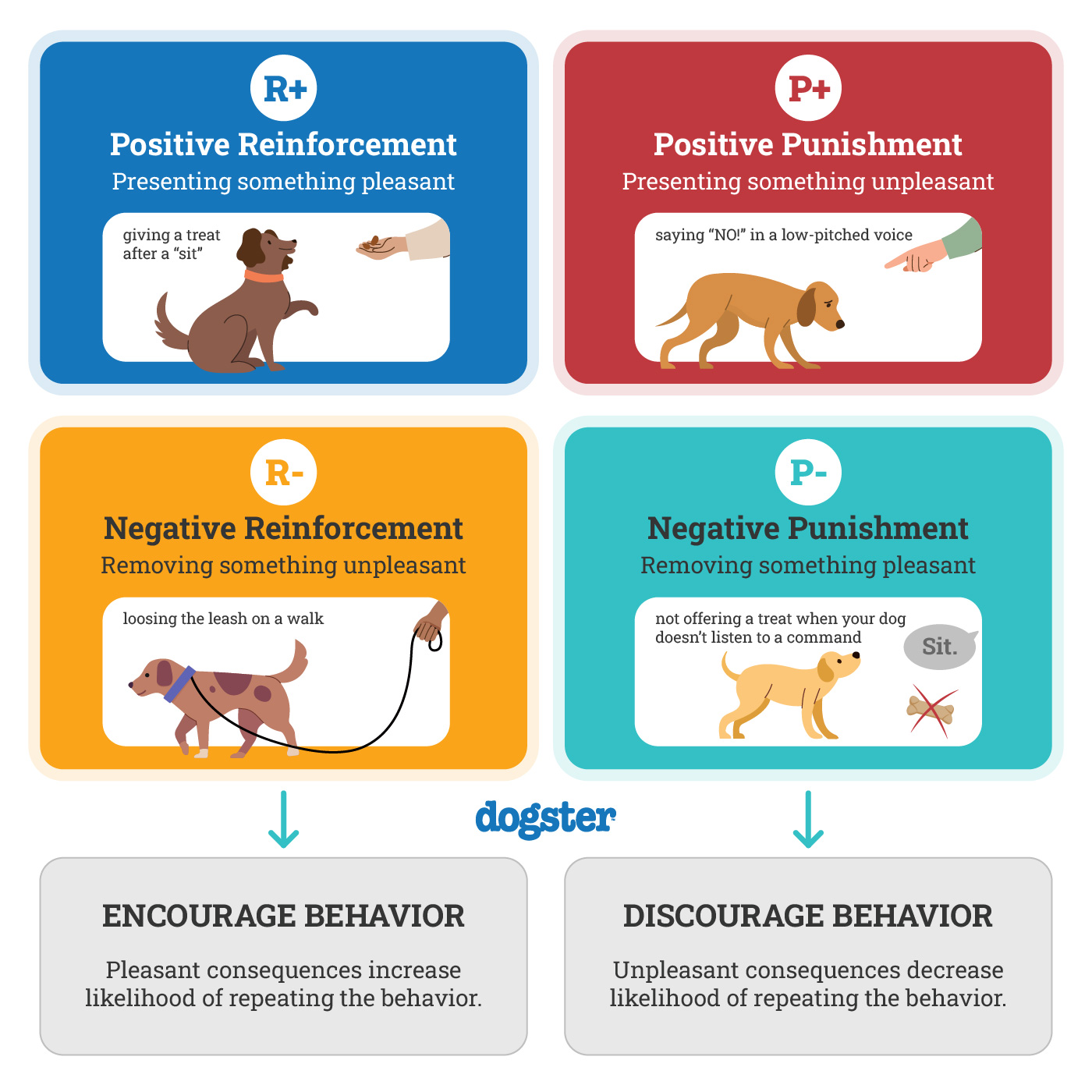
1. Positive Reinforcement
This is the most basic and arguably most effective form of training. When a dog shows desired behavior, the dog receives a reward.
2. Negative Reinforcement
This method strengthens a desired behavior through the removal of an unpleasant stimulus. For example, releasing tension on a lead when the dog stops pulling.
3. Positive Punishment
This is when you use an unpleasant action (e.g., shouting, hitting, shock) in response to an unwanted behavior.
4. Negative Punishment
This is when you remove something pleasant/enjoyable in response to an unwanted behavior. For example, taking a toy away from a growling puppy, or ignoring a jumping/barking dog.

Why Positive Reinforcement Works Best
Dogs, like all animals, seek out pleasant things like food, praise, and affection and will more quickly learn to associate these things with an action if we consistently provide them at the same time as the desired behavior. For example, every time your puppy sits down, you say “sit” and give them a reward. Eventually, they link the word, the action, and the reward.
Why Punishment and Negatives Often Fail
The main problem with punishment and negative reinforcement is that they are often based on fear, pain, and/or anxiety, which creates stress, and this is not an ideal environment for learning. The second problem is that the overall outcome for the dog is usually neutral rather than pleasant, which does not create a strong association in their mind. The only way for these methods to be truly effective is for them to be followed up with a reward when the desired behavior is displayed.
Where Do Shock Collars Fit In?
Shock collars use a combination of positive punishment and negative reinforcement.
Positive Punishment: They deter by giving a startling, unpleasant response to an unwanted behavior. Variations of these include collars that spray an unpleasant liquid or emit a piercing sound, but they all rely on punishing a particular action or behavior.
Negative Reinforcement: The unpleasant response ends when the dog is no longer doing the “wrong” thing and starts doing the “right” thing.
There are a number of different types or modes of shock collars that are used for different purposes:
- Anti-Bark Collars: These deliver a shock in response to the sound or vibrations of a bark.
- Perimeter Fencing: Uses sensors that create a non-physical boundary that triggers a shock when the dog approaches the fence line.
- Remote Operation: A remote control is used to deliver the shock in response to unwanted behaviors.
Pain and Cruelty
Let’s talk about the most obvious problem with shock collars: They give your dog a shock, which is, understandably, what the majority of objections to this method are about. Although some argue that a short, sharp, painful response to an unwanted behavior is no worse than when a pack member uses a snap or bite to correct a naughty pup, pain is not something we should be inflicting on our pets. We are not their pack members, we are their caretakers, and we should not be using pain to teach our dogs.
However, in reality, most shock collars sold today do not deliver a harmful shock; the aim is to startle, not cause pain. Modern shock collars use static electricity, with an intensity range similar to that of a TENS machine, which is used for muscle relief in humans.
The intensity and response to the shock received will vary between individual dogs, with the effects influenced by body size, coat length and density, moisture of the fur, sensitivity of the skin, as well as the dog’s temperament. Some dogs will react much more powerfully than others to a shock of the same strength.
The sensation of these collars on human skin is more of a twitch, cramp, or pinprick, and research suggests that the shocks themselves do not pose a risk to welfare.2 I have tested one shock collar at maximum strength; it made me jump, but it was not painful. So, the main practical and ethical problem involved with using shock collars is not the electric shock itself but the message that the shock sends to your dog.

Do Shock Collars Work on Dogs?
If reviews and product testimonials are to be believed, shock collars can achieve the desired results. However, they can also bring about anxiety, stress, aggression, and even less desirable behaviors. One of the main problems with shock collars is that they deliver punishment from an invisible source, sometimes for an action that isn’t clearly identified.
Take the perimeter fencing, for example. Your dog is running around the yard when suddenly there is a shriek, buzz, or zap on their neck, which gets worse if they keep moving in that direction. Eventually, they turn around and the unpleasant stimulus goes away. They look around, puzzled by what caused the horrible sensation and why. This repeats until the dog learns to avoid certain parts of the yard—mission accomplished.
What have they learned? That there is an invisible boundary to their property, or that the world beyond that boundary is unpleasant and scary?
What About Anti-Bark Collars?
There are a couple of major issues with using a shock collar to correct barking:
- Most dogs that bark excessively do so because they are experiencing anxiety, fear, or overstimulation. Throwing a negative stimulus into the mix might stop the barking, but it could also make it worse or lead to more severe behavioral problems due to increased anxiety levels.
- Some collars discharge in response to the sound of a bark at close range but can’t differentiate between the bark of the dog wearing the collar and a dog standing close to them. I’ve witnessed this myself during my brief and ill-fated trial of one of these collars when my smaller dog would bark at his larger housemate, with the larger dog receiving the shock when he wasn’t the one doing the barking!
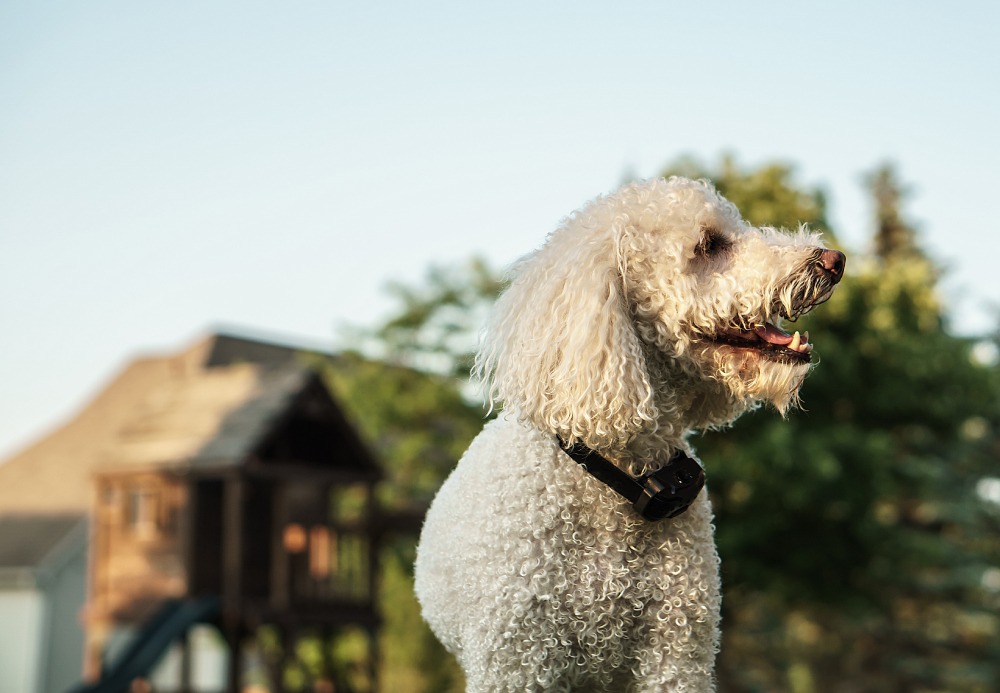
Are Shock Collars Ever a Good Idea?
Probably the most useful and reasonable use for a shock collar is in gaining control of your dog from a distance, and this was the main reason I tried one several years ago. Our Irish Wolfhound was extremely well-behaved, calm, gentle, and friendly. He played well with other dogs, but when he was running with our two Labradors, he would often chase them and grab them over the neck. It was not vicious or violent and was basically his idea of playing “catch.” But the Labs quickly got fed up with his methods and would stop playing to avoid him.
The trouble with trying to address this behavior was that it only occurred when the dogs were some distance away from us, so we decided to try the shock collar. It did not work.
The good thing about modern shock collars is that they are often not powerful enough to cause pain. The problem for us was that, to a 150-pound dog in full flight, the zap and buzz of the collar made no impression; he was having far too much fun. For the collar to have worked in this situation, it would have needed to be quite painful, and that is not okay.
Other dog owners have had great success when using shock collars to stop their dog’s actions from a distance, which then allows the opportunity to change that behavior into a desirable one. This is the step that many owners fail to include—redirecting the behavior into one that can be positively reinforced. Positive punishment makes much more of an impression when, after telling your dog what not to do, you can then reward and/or praise them when they do what you want them to do.
For this method to work, your dog needs to be pre-conditioned to the collar and what it means.
Pros and Cons of Shock Collars
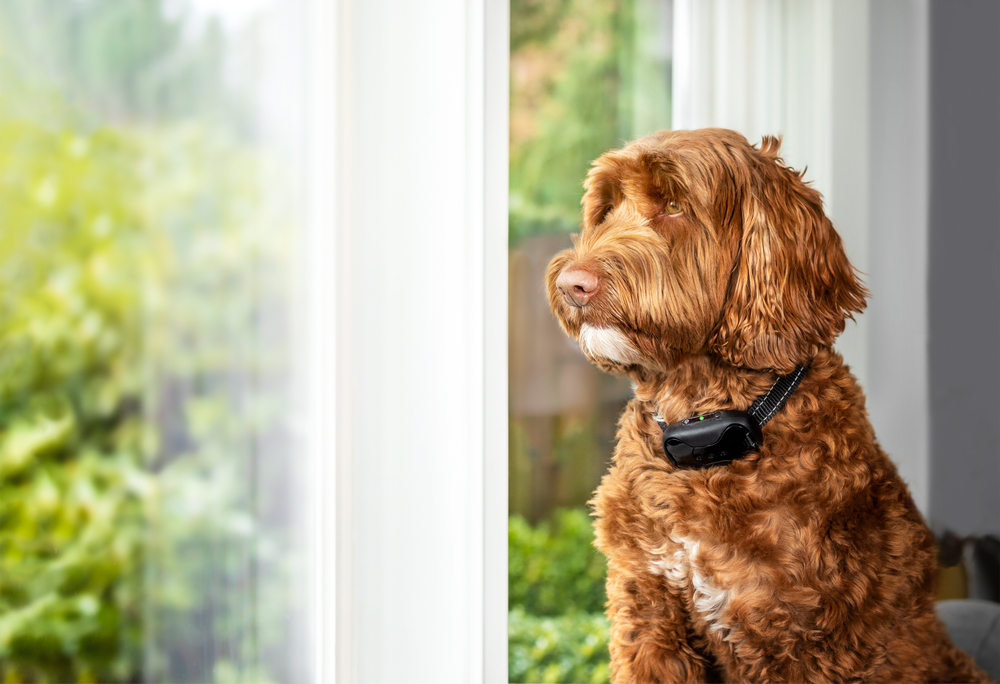
- Potential for long-distance control
- More freedom than a long leash
- Adjustable intensity for different dogs
- Modern collars often do not deliver painful shocks
- Potential to increase anxiety, fear, or aggression
- The link between the unwanted behavior and the shock is not always clear to the dog
- Some dogs are highly sensitive to them
- Some dogs have no response to them
How to Use a Shock Collar Well
Picture this: You’re at the dog park and suddenly there is tension mounting between your dog and another. They’re 20 yards away, so you know you won’t reach them in time to intervene, and your dog is ignoring your calls. You’ve just fitted your dog with a shock collar and decided this is the perfect time to use it. You push the button, and one of four things happens:
- The zap of the collar startles your dog, distracting him enough to pay attention to you, and he returns to your side. 😀
- The zap of the collar startles your already-wound-up dog, triggering them to attack the other one. 😡
- The zap of the collar startles your already wound-up dog, causing them to run away terrified, resulting in long-term anxiety about the dog park and other dogs. 😥
- The zap of the collar is so insignificant compared to the confrontation that it has absolutely no impact at all. 😞
For a shock collar to work effectively in this scenario, you need to start using it at home in a controlled environment. Shock collar instructions will explain how to gradually increase the level of your collar to elicit a response from your dog without causing distress. Once you have found the right setting for your dog, you need to teach them that when the collar goes off, they need to look and listen for your commands and return to you for a reward. If you try using the collar without firmly establishing this relationship, you will not get the desired results.
In this way, the collar can actually become a positive reinforcement tool rather than punishment, similar to clicker training. Once they consistently associate the shock with coming to you for a treat, you are ready to take this show on the road. Some collars have a range of 3,000 feet, which could be invaluable for dogs with a strong prey drive, or those used for hunting.
What Are the Alternatives to Shock Collars?
While shock collars may be one way to allow you to have control over your dog from a distance, there are a number of other methods that are equally or more effective that don’t rely on the uncertain results these collars may bring.
- Build a Fence: If the size of your property is the issue, enclose a reasonable area to contain your dog. Shock collar boundaries can lead to fear and anxiety, but they can also be ignored by a frightened dog or one that is in hot pursuit of a rabbit or another dog.
- Address the Problem: Dogs that bark excessively do so for a reason. In most cases, it is anxiety. Smaller dogs may feel threatened and need to tell everyone and everything that passes by that they are ferocious and not to be trifled with. Dogs bred for guarding, like German Shepherds or Dobermans, are often just doing what their instincts tell them to do. You can:
- Think about dietary changes or adding supplements to help boost your dog’s mood and promote calmness.
- Use a crate to provide your dog with a safe space so they do not feel they need to protect and monitor your entire home.
- Reward the calm. One thing many dog owners forget to do, myself included, is to reward calm behavior. When your dog is sitting there, doing nothing, give them praise and affection and the occasional treat. It’s hard to remember to reward your dog for doing nothing, but it will pay off!
- Use Sound: This is one situation where those annoying squeaky balls can be really helpful. There are few dogs whose ears won’t prick up at that irresistible, high-pitched squeak and come running. If your dog is in a heightened state of excitement, you will have more success by meeting them there with something equally or more exciting to get their attention back on you. Pre-conditioning your dog to associate the squeaky ball with play or a treat can be even more effective than the zap of a collar.
- Use a Long Lead: If you are not completely confident in your dog’s recall, use a long lead to allow them to play more freely, with the security of being able to bring them back safely.

Final Thoughts
Dog training should be a fun, albeit sometimes challenging, experience that strengthens the bond between you and your dog. Most animal behaviorists, dog trainers, and veterinarians will agree that positive reinforcement is the number one most effective method of training, achieving good results while improving your relationship with your dog. Training methods based on negative reinforcement or punishment are often unsuccessful or even detrimental, as they rely on fear, shock, or discomfort to achieve the desired results.
Shock collars can work on dogs, but their use in addressing barking or in place of a physical fence is not recommended, as the likely results will be anxiety, nervousness, and stress. The use of shock collars to interrupt and redirect behavior from a distance can be a useful way to gain long-distance control of your dog, but it is important that this method be paired with positive reinforcement to reward your dog for responding to the shock. These collars, and positive punishment in general, should not form a regular or significant part of your training regime, and they shouldn’t be used as an easier alternative to other training methods.
The best results will always come from your dog enjoying and looking forward to training and following commands. A dog trained through fear may be obedient, but they are also likely to be anxious. If you are struggling with dog training or a behavioral issue, talk to your vet, dog trainer, or behaviorist about the best ways to address the problem in a way that keeps you and your dog happy and healthy.
Featured Image Credit: sophiecat, Shutterstock

